ひとところに尽くす
誰にも氣づかれず じっとしていた
いつからそこに ゐたのだろう
そんな出逢いが ころころと
今日の私を 励ましてくる
Devotion to One Place
Unnoticed, it waited—
Still and silent.
How long had it been there?
These quiet encounters,
Somehow, gently lift me today.
ひとところに尽くす
誰にも氣づかれず じっとしていた
いつからそこに ゐたのだろう
そんな出逢いが ころころと
今日の私を 励ましてくる

What's Iyomeito
What's Iyomeito伊豫銘砥について
時を磨き、心を写す
ー千年の伝統が息づく伊予砥。
日本最古と謳われる伊予砥の歴史は1000年以上である。初めて公文書に伊予砥の名前が現れてから約1300年経つだろうか。
途方もない年月を、伊予砥の造部は紡いできたのだ。砥石の歴史は文化の歴史である。砥石によって大仏さまが、砥石によって日本刀が、砥石によって漆器が、砥石によって陶磁器が。そして砥石で磨かれた包丁や鉋による技術が、和食や日本建築、果ては武士道という精神的支柱まで磨きあげ、日本文化を支えてきたのである。砥石という自然からの贈り物は、日本文化の根源なのである。
Polishing Time, Revealing the Soul
Iyoto: The Natural Whetstone With a Thousand-Year Legacy
Deep in the mountains of Ehime lies the story of Iyoto—Japan’s oldest known natural whetstone. Its name first appeared in official records nearly 1,300 years ago. Since then, generations of stone artisans, called Tsukuribe, have carried the craft forward.
Whetstones are more than tools. They are silent enablers of Japanese culture.
It was with whetstones that the Great Buddha was carved.
It was with whetstones that samurai swords were sharpened, lacquerware smoothed, and fine woodworking tools honed.
The artistry of Japanese cuisine, the precision of traditional architecture, and even the spirit of bushido—all were shaped, in part, by the quiet power of whetstones. A gift from nature, they form the hidden foundation of Japanese craftsmanship.
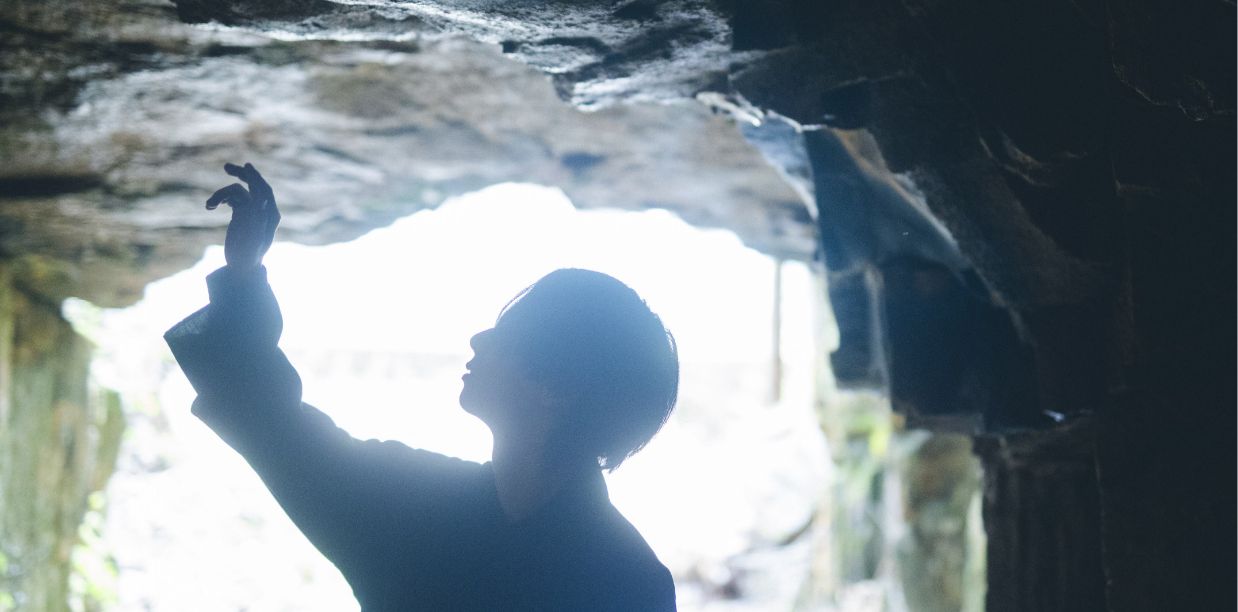
昭和の終わり頃、愛媛県砥部町外山地区にある砥石山は閉山した。それに次いで伊予唐川の砥石山も閉山し、伊予砥の歴史は途切れたのだ。
伊予には造部の口伝が残る。先人の想いを継ぐ人がいる。歴史を知る人がいる。歴史を紡ごうとする人々がいる。現代の造部、伊予鉱業所は途絶えた歴史を手繰り寄せ掬い上げんとする。閉山された砥石山より数キロ離れた水梨山を採掘場とし、かつての造部から技術や想いを繋いで新たな砥石を造りだす。
歴史を紡ぐことが、先人への感謝となり、歴史を残すことが、後から来る者のためになる。
水梨山から切り出した天然砥石は、「伊予砥」改め「伊豫銘砥」。伊豫銘砥は伊予砥の新たな歴史の導である。澪つくしひめは砥石山の麓にアトリエを構え、山で遊び、山と生きる。目利き選別を自ら行い、独りよがりの砥石を扱う。伊予鉱業所とともに造部として生きる唯一の問屋である。
A Tradition Once Lost, Now Reborn
By the late Showa era (1980s), the once-rich whetstone quarries of Tobe Town and Karakawa were closed, and the tradition of Iyoto seemed on the verge of disappearing.
Yet in Iyo, the memory lived on. Some remembered. Some cared. And some chose to continue.
Today, Iyo Kougyousyo Ltd has revived this legacy by extracting stone from nearby Mizunashi-yama, bringing new life to the craft. Their whetstones are now called Iyo-Meito—“The Named Whetstone of Iyo”—marking a new chapter in this thousand-year story.
At the foot of the old quarry, a small atelier named Miwotsukushi-hime was born. Its artist lives in harmony with the mountain, carefully selecting each stone to craft tools that carry not ego, but purpose. She is the only distributor who works directly with the miners to create each whetstone by hand.
Continuing the craft honors the past. Preserving the legacy ensures its future.
天然砥石について
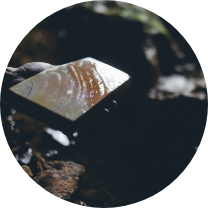
産地が名称となる天然砥石が最初に登場する記録は正倉院文書(しょうそういんもんじょ、奈良時代)であり、このとき初めて伊予砥という言葉が登場した。
天平宝字4年(760年)東大寺にて観世音菩薩造立に伊予砥三顆が用いられたと記されている。
それから1200年以上に渡って、日本独特の伝統文化や伝統工芸を陰で支えてきた黒衣(くろこ)が天然砥石なのだ。What Is a Natural Whetstone?
The oldest known reference to natural whetstones by place name appears in the Shosoin Documents from the Nara period. One record from the year 760 notes that three Iyoto stones were used in constructing the Kannon Bodhisattva statue at Todaiji Temple.
For over 1,200 years, these unassuming stones have quietly supported Japan’s most iconic traditions.
What's Miwotsukushihime 澪つくしひめについて
歴史を紡ぎ、命を吹き込み
未来を照らす。
いまはむかし、当時の物流を担っていたのは馬でも人でもなく水であった。
水の流れは地盤を侵食し、深く筋をつくる。そのえぐれた筋を水緒(澪)と呼んだ。
澪には水深があり、航路となったため当時の人々にとって澪といえば航路そのものを表していたのだ。
しかし、河口付近には土砂の堆積による三角州があり、水面からは澪を判断することが難しく、座礁の危険が非常に高かった。
そこで考案されたのが澪に目印をつけることである。澪を挟むように建てられた大きな木の杭は、船乗りたちにとっての命綱となった。
これが澪を知らせる標識、澪標(みおつくし)である。
Who Is Miwotsukushi-hime?
She weaves history, sustains craft, and illuminates the path forward.
In ancient Japan, it was rivers—not roads—that connected places. As water carved its path through the land, it left deep grooves called miwo—channels for ships to follow. Near river mouths, tall wooden markers called miwotsukushi were placed to guide sailors safely through these waters.
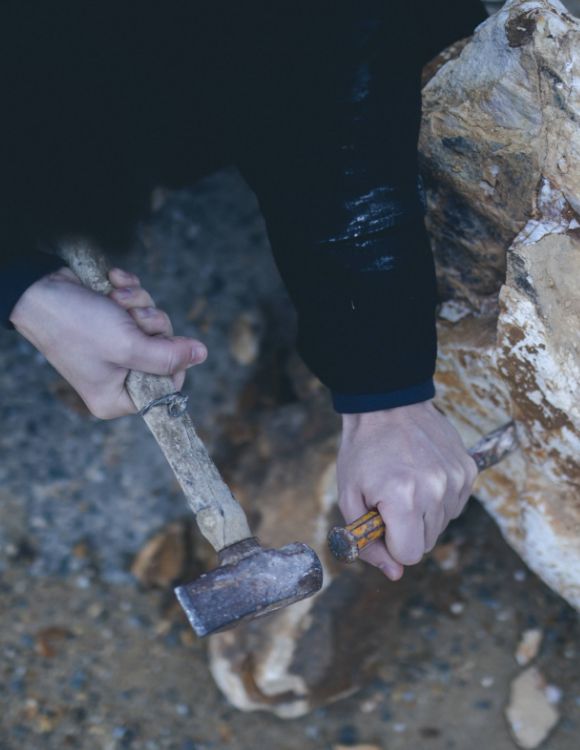
澪標という言葉は和歌に用いられた。船乗りの命綱。それは日照りの日も嵐の日も雪の日も雷の日も、船乗りに正しく澪を伝えるため、“身を尽くし”ているのだ。
「みをつくし 恋ふるしるしにここまでも めぐり逢ひける えにはふかしな」源氏物語
The term miwotsukushi also appears in classical Japanese poetry, symbolizing steadfast devotion—standing tall through sun, storm, snow, and lightning, to guide others forward.
“Miwotsukushi, my heart's guide—
Though fate tossed us in separate streams,
Here, we meet again.”
— The Tale of Genji
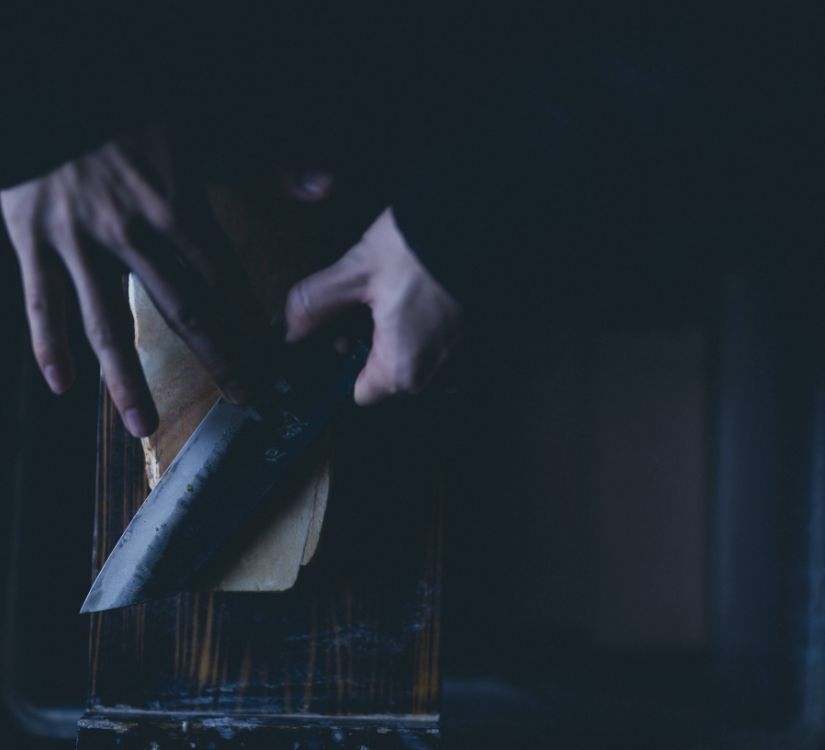
澪が通り道となったように、澪標が導となったように、歴史を守る一助になれたら。
歴史を人を伝統を、文化を守り語り継げたら。
日本から世界へ、日本の文化を世界に運ぶ通り道となり、日本の伝統に身を尽くす。
澪つくしひめは愛媛県より文化を背負う職人の想いを、美を尽くした日本文化を、正しく伝えることに身を尽くす。美しさを紡ぐ問屋である。
Inspired by those markers, Miwotsukushi-hime aims to guide culture—
To preserve stories, traditions, and the soul of craftsmanship.
To serve as a vessel, carrying Japanese culture from its roots in Ehime out into the world.
She is a wholesaler, a guardian of beauty and tradition, and a devoted partner to the artisans who shape them.

Items商品紹介
砥石:伊豫銘砥Whetstone iyomeito
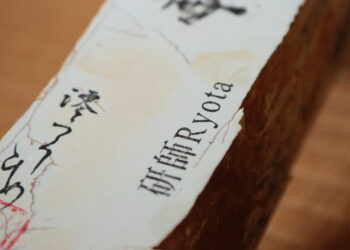
Togishi Ryota おすすめTogishi Ryota
研師Ryotaさんが砥石山に来山されたときに製作した砥石です
岩から砥石になるまでの目利きを澪つくしひめ山本とJikko 研師Ryota共同で行い、満足いくものを造らせていただきました
つながりOthers
商品はありません

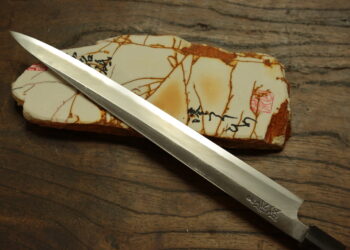
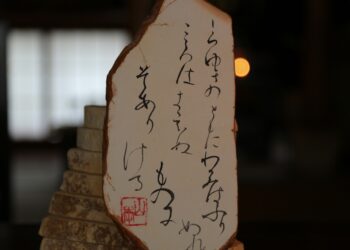
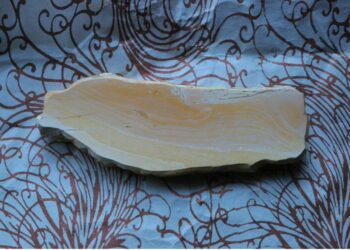


 Instagram
Instagram
